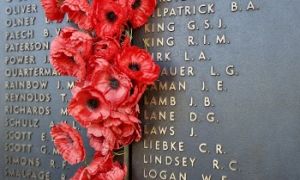The Early Years Learning Framework (EYLF) is Australia’s national framework for early childhood education, designed to support children’s learning from birth to five years old. It is not a strict curriculum but rather a guiding framework that helps educators create meaningful learning experiences. The following article provides information on: EYLF Explained, Understanding The EYLF Principles, Understanding The EYLF Practices , What is The Purpose Of The EYLF, Strategies To Implement EYLF and more.
EYLF Explained
At its core, EYLF is built around three key concepts: Belonging, Being, and Becoming. These ideas emphasize that children develop best when they feel connected to their community, are allowed to explore their identity, and are supported in their growth and learning.
The framework is structured around five learning outcomes:
- Children have a strong sense of identity – They feel safe, secure, and confident in their abilities.
- Children are connected with and contribute to their world – They learn about relationships, diversity, and fairness.
- Children have a strong sense of well-being – They develop emotional resilience and physical health.
- Children are confident and involved learners – They engage in problem-solving, creativity, and exploration.
- Children are effective communicators – They express themselves through language, symbols, and various forms of communication.
EYLF also highlights principles and practices that guide educators in fostering a rich learning environment. These include learning through play, intentional teaching, cultural competence, and building strong relationships with families.
Understanding The EYLF Principles
The Early Years Learning Framework (EYLF) is built on five key principles that guide educators in supporting children's learning and development. These principles emphasize the importance of relationships, partnerships, high expectations, respect for diversity, and ongoing learning.
- Secure, Respectful, and Reciprocal Relationships – Children learn best when they feel safe and valued. Strong relationships with educators and caregivers help build confidence and emotional security.
- Partnerships with Families – Parents and caregivers are a child’s first teachers. Working together with families ensures children receive consistent support in their learning journey.
- High Expectations and Equity – Every child is capable of learning and growing. Educators should believe in their potential and provide opportunities for success, regardless of background or ability.
- Respect for Diversity – Children come from different cultural and social backgrounds. Recognizing and celebrating diversity helps them develop a sense of belonging and appreciation for others.
- Ongoing Learning and Reflective Practice – Educators continuously improve their teaching methods by reflecting on their practices and adapting to children's needs.
The EYLF practices focus on how educators implement these principles in daily interactions. This includes learning through play, intentional teaching, cultural competence, and building strong relationships. Play-based learning encourages curiosity and creativity, while intentional teaching involves guiding children’s learning with thoughtful strategies. Cultural competence ensures that all children feel represented and included, and strong relationships create a supportive environment for growth.
Understanding The EYLF Practices
The Early Years Learning Framework (EYLF) practices guide educators in creating meaningful learning experiences for children. These practices ensure that early childhood education is holistic, inclusive, and responsive to children's needs. Here’s a deeper look at the key EYLF practices:
-
Holistic Approaches – This practice recognizes that children’s learning and development are interconnected. Educators support physical, social, emotional, and cognitive growth by integrating different types of activities, such as sensory play, outdoor exploration, and creative expression.
-
Responsiveness to Children – Educators observe and respond to children's interests, strengths, and needs. By adapting activities based on children's curiosity and engagement, they create a learning environment that fosters independence and confidence.
-
Play-Based Learning and Intentionality – Play is central to children's learning. Educators use intentional teaching strategies to guide play experiences, ensuring that children develop problem-solving skills, creativity, and social connections.
-
Learning Environments – The physical and emotional environment plays a crucial role in children's development. Well-designed spaces encourage exploration, collaboration, and a sense of belonging.
-
Cultural Responsiveness – Recognizing and valuing diverse cultural backgrounds helps children develop respect and understanding. Educators incorporate cultural traditions, languages, and perspectives into learning experiences.
-
Continuity of Learning and Transitions – Supporting children through transitions, such as moving between age groups or starting school, helps them feel secure and confident. Educators work closely with families to ensure smooth transitions.
-
Assessment and Evaluation for Learning, Development, and Well-being – Educators document and reflect on children's progress to tailor learning experiences that meet individual needs.
What is The Purpose Of The EYLF?
The EYLF is applied in early childhood settings to create enriching learning experiences that support children's development. Educators use EYLF principles and practices to design environments that foster curiosity, creativity, and social-emotional growth.
One key aspect of EYLF is play-based learning, where children explore concepts through hands-on activities rather than formal instruction. Educators observe children's interests and tailor experiences to encourage problem-solving, communication, and independence. They also use intentional teaching, which involves guiding children's learning through thoughtful interactions, questioning, and modeling behaviors.
The framework emphasizes cultural responsiveness, ensuring that children from diverse backgrounds feel valued and included. Educators incorporate cultural traditions, languages, and perspectives into daily activities to promote respect and understanding. Additionally, EYLF supports continuity of learning, helping children transition smoothly between different stages of early education.
Assessment and reflection are also crucial in EYLF-based settings. Educators document children's progress, adapt teaching strategies, and collaborate with families to ensure each child receives personalized support. By applying EYLF principles, early childhood settings create nurturing spaces where children develop confidence, resilience, and a lifelong love for learning.
Strategies To Implement EYLF
Implementing EYLF strategies in early childhood settings involves creating a learning environment that supports children's development through play, relationships, and intentional teaching. Educators can apply EYLF principles by fostering secure and respectful relationships, ensuring children feel safe and valued. This includes engaging with families to build strong partnerships and recognizing the diverse backgrounds of children to create inclusive learning experiences.
A key practice is play-based learning, where educators provide opportunities for exploration, creativity, and problem-solving. This can be done by setting up engaging play spaces, offering open-ended materials, and allowing children to take the lead in their learning. Intentional teaching is another important strategy, where educators guide children's learning through thoughtful interactions, questioning, and modeling behaviors.
Creating a responsive learning environment means adapting activities based on children's interests and developmental needs. This includes incorporating cultural elements, supporting transitions between age groups, and using assessment tools to track progress. Educators should also reflect on their practices regularly to ensure continuous improvement.
Further Information
5 Stages Of The EYLF Planning Cycle
EYLF Practices And Strategies To Implement Them
EYLF Principles And Strategies To Implement Them
Belonging, Being & Becoming Concepts Of The EYLF







 Here is the list of the EYLF Learning Outcomes that you can use as a guide or reference for your documentation and planning. The EYLF
Here is the list of the EYLF Learning Outcomes that you can use as a guide or reference for your documentation and planning. The EYLF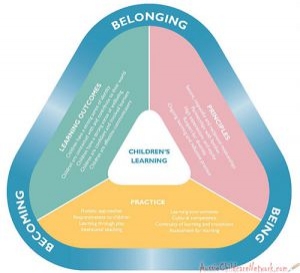 The EYLF is a guide which consists of Principles, Practices and 5 main Learning Outcomes along with each of their sub outcomes, based on identity,
The EYLF is a guide which consists of Principles, Practices and 5 main Learning Outcomes along with each of their sub outcomes, based on identity, This is a guide on How to Write a Learning Story. It provides information on What Is A Learning Story, Writing A Learning Story, Sample
This is a guide on How to Write a Learning Story. It provides information on What Is A Learning Story, Writing A Learning Story, Sample One of the most important types of documentation methods that educators needs to be familiar with are “observations”. Observations are crucial for all early childhood
One of the most important types of documentation methods that educators needs to be familiar with are “observations”. Observations are crucial for all early childhood To support children achieve learning outcomes from the EYLF Framework, the following list gives educators examples of how to promote children's learning in each individual
To support children achieve learning outcomes from the EYLF Framework, the following list gives educators examples of how to promote children's learning in each individual Reflective practice is learning from everyday situations and issues and concerns that arise which form part of our daily routine while working in an early
Reflective practice is learning from everyday situations and issues and concerns that arise which form part of our daily routine while working in an early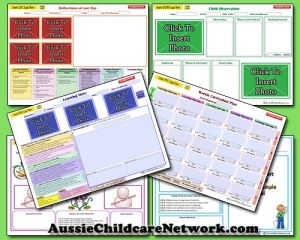 Within Australia, Programming and Planning is reflected and supported by the Early Years Learning Framework. Educators within early childhood settings, use the EYLF to guide
Within Australia, Programming and Planning is reflected and supported by the Early Years Learning Framework. Educators within early childhood settings, use the EYLF to guide When observing children, it's important that we use a range of different observation methods from running records, learning stories to photographs and work samples. Using
When observing children, it's important that we use a range of different observation methods from running records, learning stories to photographs and work samples. Using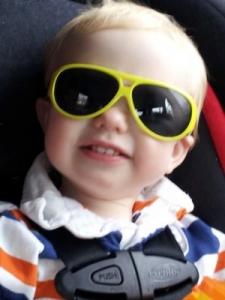 This is a guide for educators on what to observe under each sub learning outcome from the EYLF Framework, when a child is engaged in
This is a guide for educators on what to observe under each sub learning outcome from the EYLF Framework, when a child is engaged in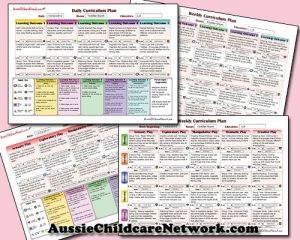 The Early Years Learning Framework describes the curriculum as “all the interactions, experiences, activities, routines and events, planned and unplanned, that occur in an environment
The Early Years Learning Framework describes the curriculum as “all the interactions, experiences, activities, routines and events, planned and unplanned, that occur in an environment
